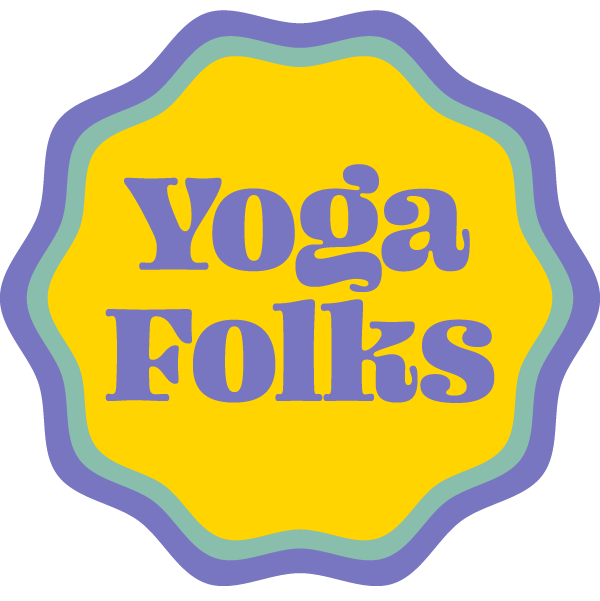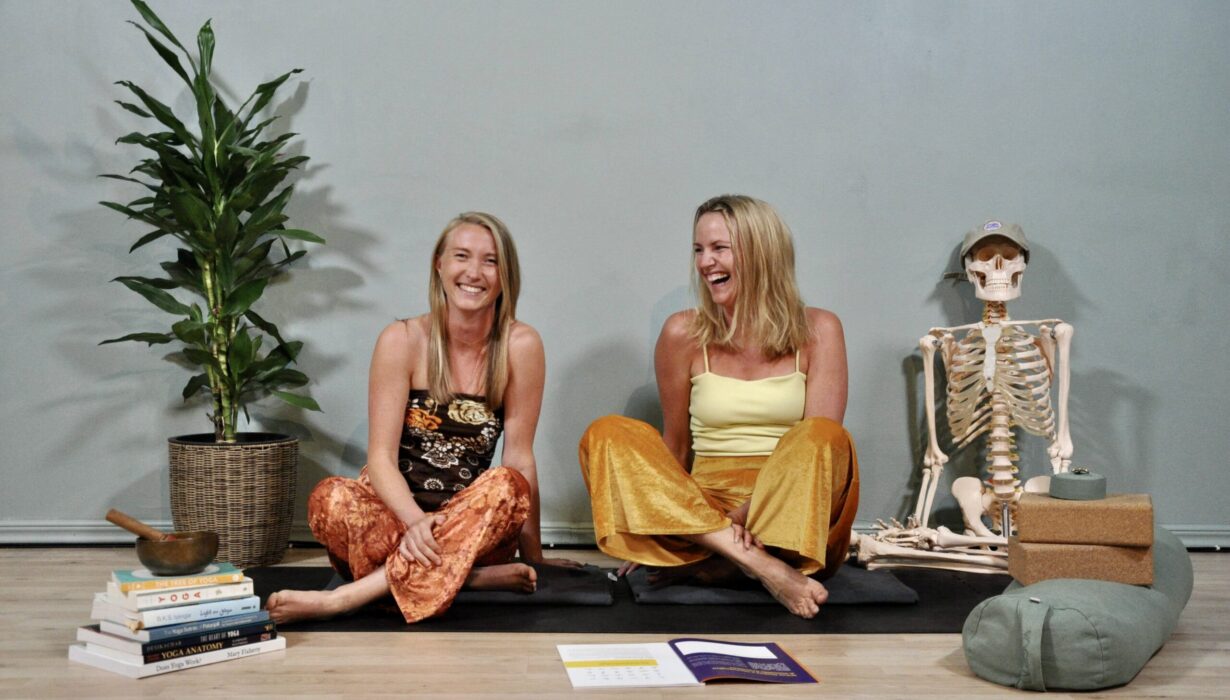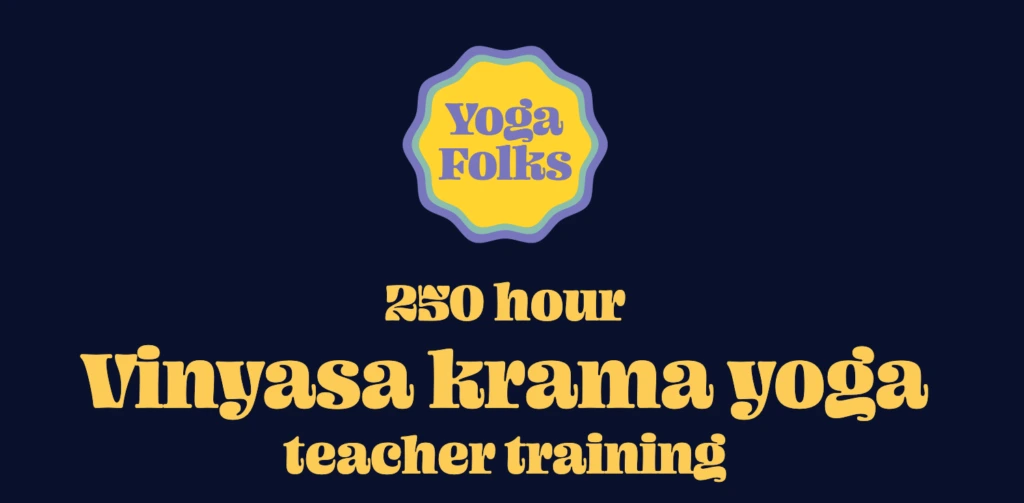Yoga is a rich, diverse practice that benefits the mind, body, and spirit, yet many myths and misconceptions surround it. In our yoga teacher trainings, we delve deeply into these topics to uncover the truth. Ida Farneman is one of our esteemed yoga teachers and a much-appreciated yoga therapist and physiotherapist. Josephin Westerlund is our head of school and have over 2000 hours of training. We’ve asked them to debunk some common myths to better understand the true essence and benefits of yoga.
Myth 1: You have to be flexible to do Yoga
Fact: Contrary to common belief, yoga isn’t solely about flexibility or restricted to the young and flexible. We often encounter the misconception that “I’m not flexible enough to do yoga,” which is disheartening because the reality is quite the opposite. In fact, if you lack flexibility, yoga can be especially beneficial, and you may notice results quickly.
Some goals we think are worthy to aim for is to be able to put on your shoes without having to sit down, or be able to squat down pick up a cute bunny you meet in the park without using a friend to get back up! And also, yoga is much more than just improving flexibility!
Myth 2: Flexibility is determined by muscle length
Fact: It’s a common misconception that muscle and fascial length is what determines our flexibility. In reality, flexibility and our range of motion is largely governed by the nervous system. This is why our range of motion increases significantly during anesthesia (did you know that?!) and also why we can feel tight and stiff in times of stress and uncertainty. When the autonomic nervous system interprets the environment as safe, our range of motion will increase. When it interprets the environment as unsafe our range of motion will decrease.
Ever been to a yoga class and heard someone breathing like a diesel engine when the teacher cues to incorporate ujjayi breathing?
Myth 3: Taking deep breaths increases oxygen uptake
Fact: Have you ever been to a yoga class and heard someone breathing like a diesel engine when the teacher cues to incorporate ujjayi breathing through the nose? The truth is that many yoga traditions teach students to breathe like this. However, this is simply not effective to increase oxygen; quite the opposite. While it might seem logical that bigger breaths mean more oxygen, this breathing actually expels more carbon dioxide. Since oxygen binds to carbon dioxide for effective utilization by the body, excessive breathing (such as big breaths, mouth breathing or many breaths) can lead to reduced oxygenation, not more. Opt for soft, nasal breathing or ujjayi, resembling a “soft whispering ocean,” for optimal practice.
Myth 4: Relax your glutes in backbends to prevent injury
Fact: Have you ever heard that you absolutely shouldn’t engage your butt in a backbend, such as bridge pose or full wheel. Have you also heard that you absolutely have to engage your butt in that same backbend? What are we supposed to believe here? The ideas have been conflicting among teachers so let’s debunk this belief. Contrary to popular belief, relaxing your glutes (the big butt muscles) during backbends can actually compromise the support your spine needs. The gluteus maximus is the main hip extensor of the body and as we backbend we extend the spine and the hip, which makes the activation of the gluteus maximus crucial to find a well supported and functional backbend. Engaging your glutes will simply not compress the low back or the sacroiliac joints, but it will help to extend the hips properly and support the lumbar spine and sacroiliac joints properly, so squeeze away!
Myth 5: Your knee must be stacked over the ankle!
Fact: Hands up if you have ever heard this cue in a yoga class. Knee over ankle is an instruction that we can hear so often, but why? For instance, in poses like lunges and chairpose, you might hear teachers cautioning against letting your knees bend past your feet to prevent knee injury and “protect your knees”. However, this advice is rooted in tradition rather than modern physiotherapy and biomechanics.
While it’s often emphasized to avoid letting your knees flex more than 90 degrees and go beyond your feet in yoga poses, it’s not a matter of safety. In fact, from a biomechanical point of view the body is very adaptable, resilient and loves variety. If it would be dangerous to let our knees bend past 90 degrees, then walking in stairs or squatting would be horrific movements for the knees, and nope-eli-nope, they are not. Instead of fixating on the idea of knee over ankle in a lunge position, the focus should be on distributing weight evenly throughout the lower body, activating the muscles of the lower body and prioritizing alignment that feels good, where the knee might be slightly behind, in front of or on top the ankle!
Fostering a positive and empowering environment in yoga classes is crucial for promoting well-being
Myth 6: Placing your foot on the knee in Vrksasana (Tree Pose) will damage your knee
Fact: A foot on your knee will simply not cause a knee injury. The knee is used to withstand forces in different planes every day, and adding load to the knee in different ways actually helps it to grow more resilient and functional! How great is that?! The pressure exerted on the knee while standing up is minimal. When approached mindfully, with attention to hip stability, leg activation and core engagement, this variation of foot placement is considered safe and effective. Additionally, yoga teachers and all types of fitness instructors should avoid labeling movements as “dangerous” or discussing potential injuries, as fear-based language can contribute to the nocebo effect. Research on the nocebo effect indicates that priming students with cues like “avoid this to prevent injury, be careful” may actually induce pain. Therefore, fostering a positive and empowering environment in yoga classes is crucial for promoting well-being. Your body is strong, pliable and capable!
Myth 7: Your feet should always be parallel and hip width apart to avoid injuries
Fact: Actually, this traditional cuing isn’t as crucial as it seems. While this placement of your feet might work for many, it’s not a universal fix. If you ever feel discomfort in your knees, you can always play around with changing the positioning of your feet. Maybe you need to widen your stance! There’s no biomechanical magic to hip-width spacing; what truly matters is a comfortable knee position. In fact, a slight external rotation of the hips (turning the toes out slightly) can often be more beneficial. Embrace experimentation with foot placement—it’s healthy and totally normal!
Myth 8: You have to draw your shoulders away from your ears when you are lifting your arms over head to prevent neck compression
Fact: Let’s uncover the truth! Ever been told to draw shoulders down in Utkatasana? Here’s the scoop: it actually disrupts natural biomechanics. Why? When our arms rise above 90 degrees (humeroscapular rhythm), the shoulder blade must upwardly rotate to accompany the movement. Instead of forcibly pulling shoulders down, a more effective cue is to “gently soften the sides of the neck.” This prevents overactivation of the trapezius. Pulling the shoulder blade down during full arm flexion increases compression between the acromion and humerus, risking irritation and injury to the supraspinatus and acromial bursa – and if you think about it – reaching for the crisps on the top shelf, would you pull your shoulder down while reaching? Try it!
Myth 9: Downward facing dog is a resting pose
Fact: Let’s set the record straight! Have you ever heard the sentence “let’s rest in downward dog”? Newcomers to yoga are usually the most confused by this cue. Downward dog is quite the opposite to a relaxation pose. Downward Dog demands significant muscle engagement for stability. Picture yourself on a slippery floor wearing socks and gloves—every ounce of effort to stay put mirrors the essential activation required in this pose. So, next time you’re in Downward Dog, embrace the challenge knowing that your active engagement is vital for supporting your body and warding off injuries.
Thank you Ida and Josephin for sharing your knowledge and debunking the common yoga myths! Interested to dive even deeper into these topics? Read more about our yoga teacher trainings and take the next step to deepen your understanding and practice of yoga.
Book recommendations:
Physiology of Yoga
The Oxygen Advantage
Read more:Reasons to take a Yoga Teacher Training even if you don’t want to teach



